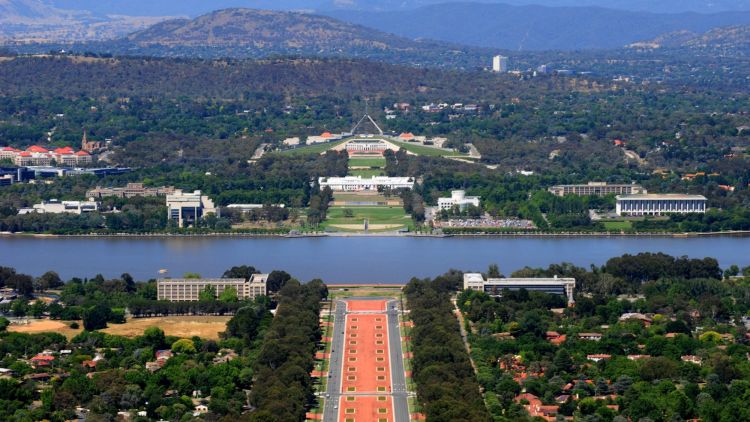 So many trees, so many hills, so many trails. Central canberra, taken from Mount Ainslie. Photo: Karleen Minney
So many trees, so many hills, so many trails. Central canberra, taken from Mount Ainslie. Photo: Karleen Minney Back in the early 1920s popular magazine, the Bulletin, allegedly first coined the ironic label “the bush capital” to describe Canberra.
Since then the city has forged ahead into one of the most distinctive places to live and work in Australia, but it’s not without its peccadillos . . . those oddities that make visitors scratch their heads.
Here’s a top 10 of our “only in Canberra” quirks that were collated with help from Dr Andrew MacKenzie, assistant professor in landscape architecture at the University of Canberra.
1. You don’t own the land your house is built on
Our 99-year leases are the norm in Canberra with the first of those set to expire in 2023.
The expectation is those leases will simply be rolled over.
2. The great north and south divide
Are you a committed northsider or southsider? Each is convinced they live on the right side of the lake.
3. “Govies” everywhere
A distinctive feature of the Canberra residential landscape that recognises the government was responsible for much of the early home building to accommodate a growing workforce.
4. Front hedges

Canberrans love a good hedge, like at this Henty Street home in Braddon. If only they were still trimmed for free.
“The guiding fathers sought to create a kind of suburban, democratic utopia and fences were discouraged to promote a sense of openness,” Dr MacKenzie says.
“If you were a government worker, your hedges were actually pruned for you.”
5. Local shops
Every suburb was given its own local shops and primary school to, once again, promote a sense of neighbourhood where everybody could buy their essentials or walk to school.
6. Exotic trees
Suburbs in the inner south feature large concentrations of deciduous and other exotic trees while many other suburbs are characterised by natives like eucalypts.
Trees were often planted well ahead of populations to provide a greening and canopy cover.
7. Embassy suburbs
Yarralumla and O’Malley are home to most of the foreign embassies.
8. No houses on hills
Residential development is tightly regulated as far as home construction on Canberra’s major hills is concerned. However, many residential properties are lucky to be situated on an elevated patch of land.
9. Low density homes on the city’s doorstep
Where else but Canberra could you find big block homes within minutes of the CBD?
10. Walkways, cycle paths and woodlands

Canberra: a cyclist’s dream. Photo: Rob Homer
Most homes in Canberra are probably only 10 minutes away from open woodland while walkways and cycle paths proliferate – something our big city rivals can only envy.
Again, this goes back to founding design principles that promoted a sense of neighbourhood and ease of movement.